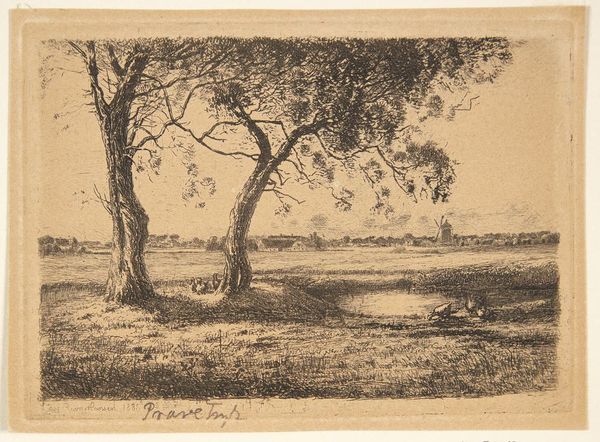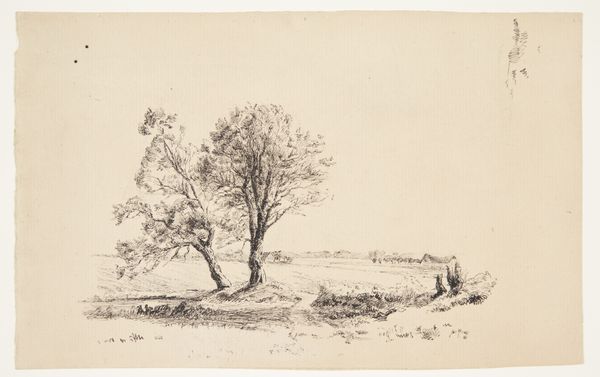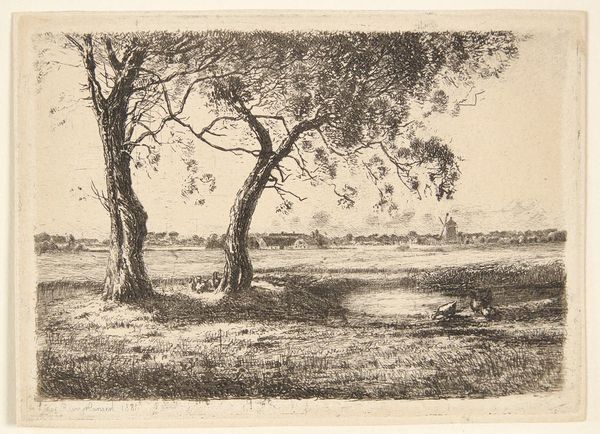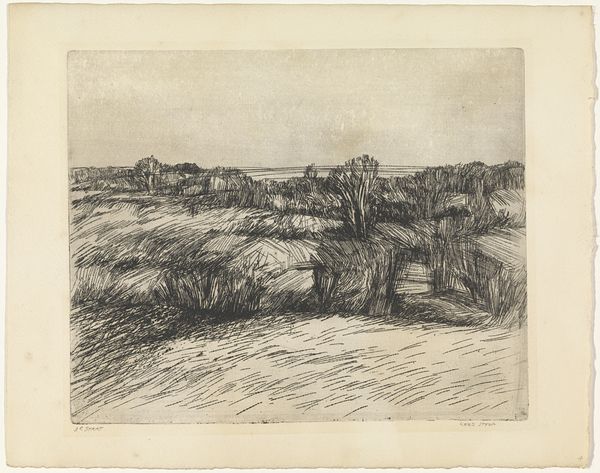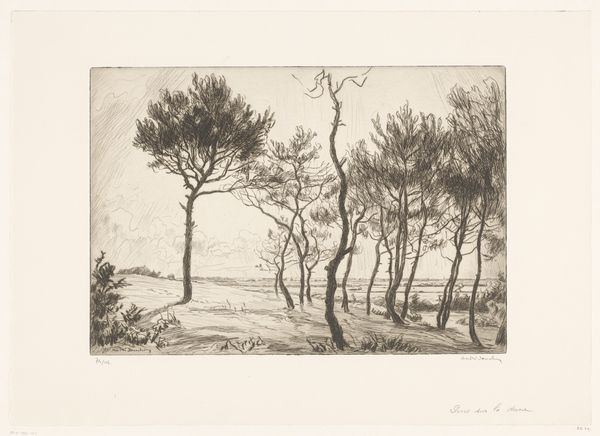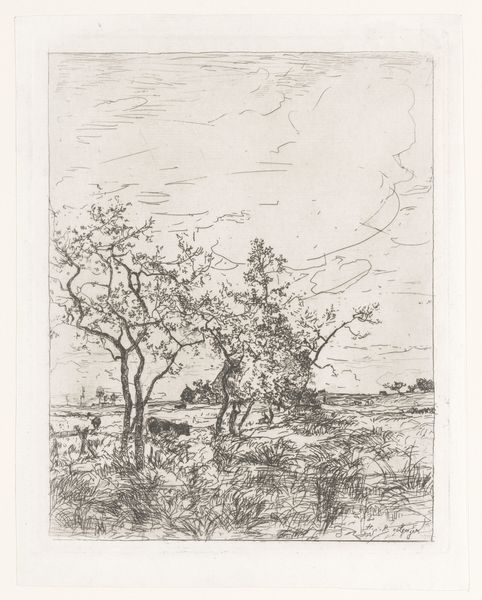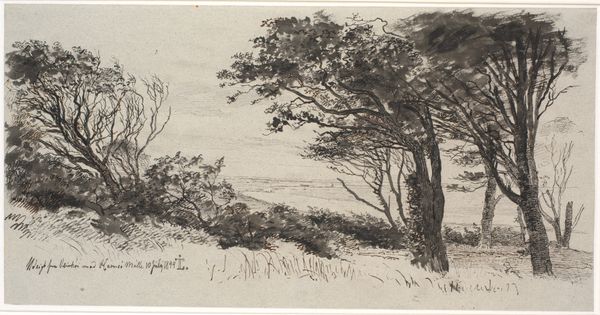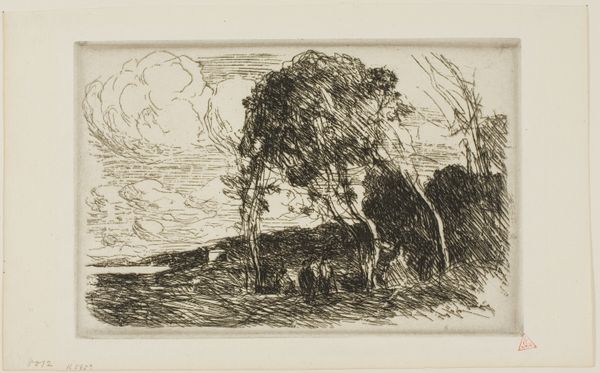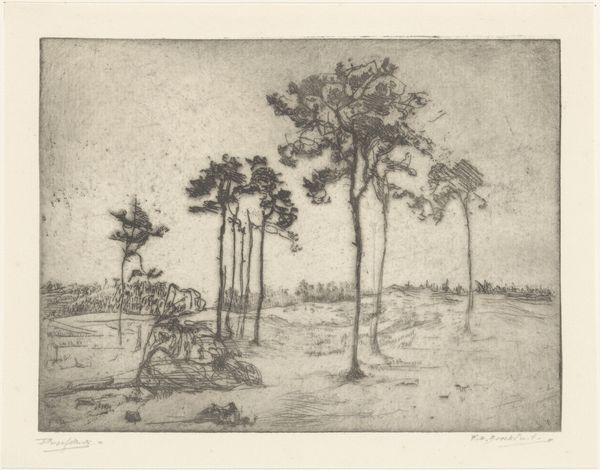
Dimensions: height 99 mm, width 120 mm
Copyright: Rijks Museum: Open Domain
Curator: This is "Boom bij een omheining en een weide," or "Tree by a Fence and a Meadow," a print made between 1912 and 1914. The artist is Martin Hardie, a British etcher and watercolourist known for his landscapes. Editor: Well, my first thought is… melancholic. It’s a quiet sort of loneliness, isn’t it? Like a memory fading at the edges. That lone tree bending in the wind really sets the tone. Curator: I think you’ve hit upon something important. This image evokes the pastoral tradition, but it's a bit unsettling. There’s a vulnerability evident, not only in that windswept tree but also in the starkness of the field and the implied restrictions of the fence. We can look at the artwork in the contexts of changing attitudes toward industrialization and the impact of enclosure on rural life. Editor: Absolutely. The fence—it's not just a barrier, is it? It's a symbol of imposed order, cutting across the natural world. You sense this push-and-pull between freedom and constraint, almost like the land itself is resisting. It brings to mind the impact these types of transformations had on labor, gender, and the availability of shared resources, too. Curator: Precisely. Hardie's background adds another layer. He witnessed firsthand the changing rural landscape, as common land and resources were depleted, so in essence, that experience shaped his art. The bareness could signify an attempt to come to terms with these political themes by rendering nature. Editor: You know, it's interesting. Even though the scene seems quite bare, Hardie uses so many lines. It reminds me of how memory works. It is never perfectly complete or detailed, it needs to be traced and retraced and pieced together, even when incomplete. What I find great, is that with something simple the artwork can suggest the larger theme of cultural and environmental shift. Curator: Indeed, this simple drawing, rich with layers of interpretation, serves as a stark reminder of social divisions and its legacy today. It can be also understood through our personal attachment to a particular place or landscape. Editor: Makes you think twice about idyllic landscapes, doesn’t it? Almost everything bears an important, and often complex story that is always important to consider and research.
Comments
No comments
Be the first to comment and join the conversation on the ultimate creative platform.
